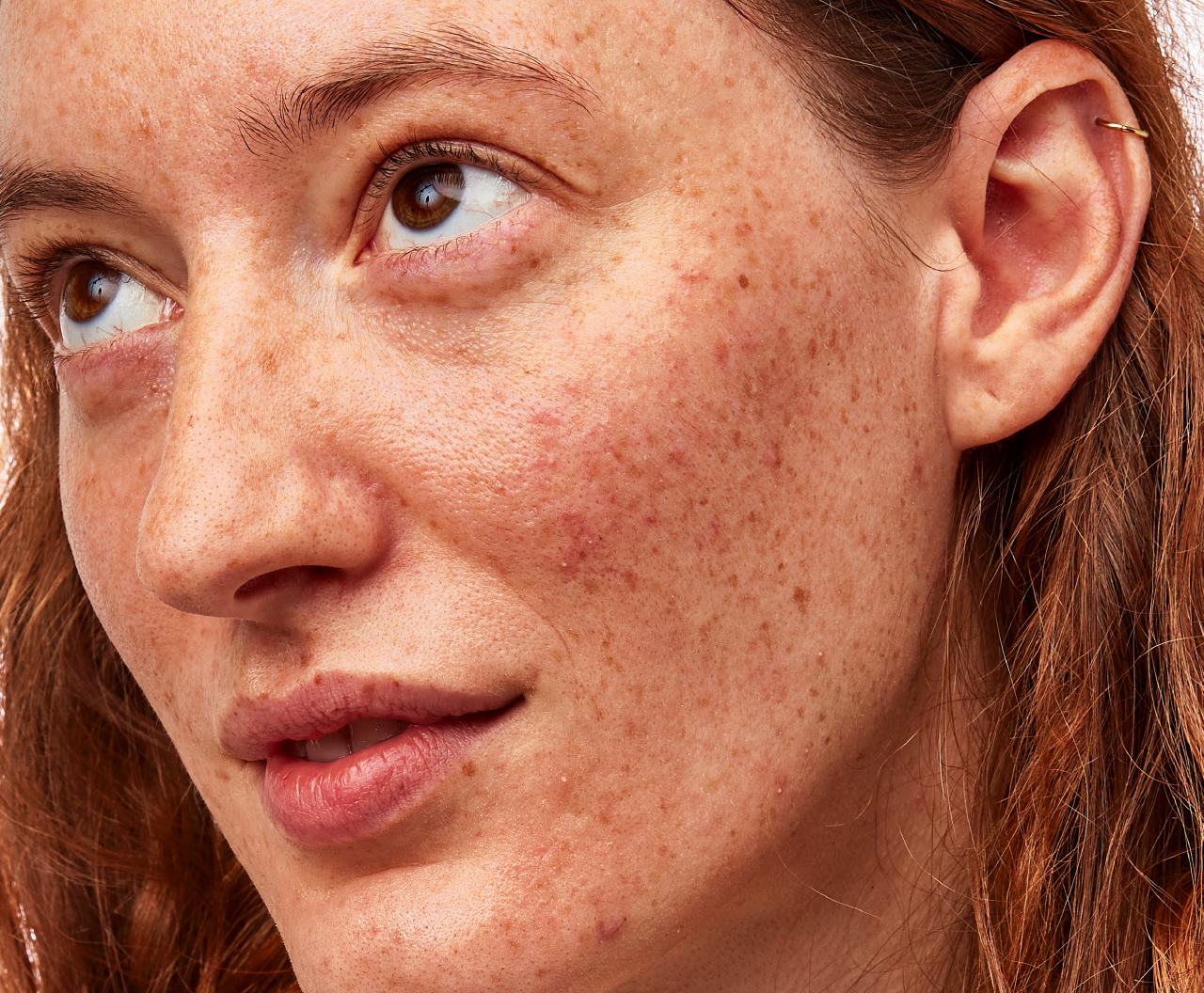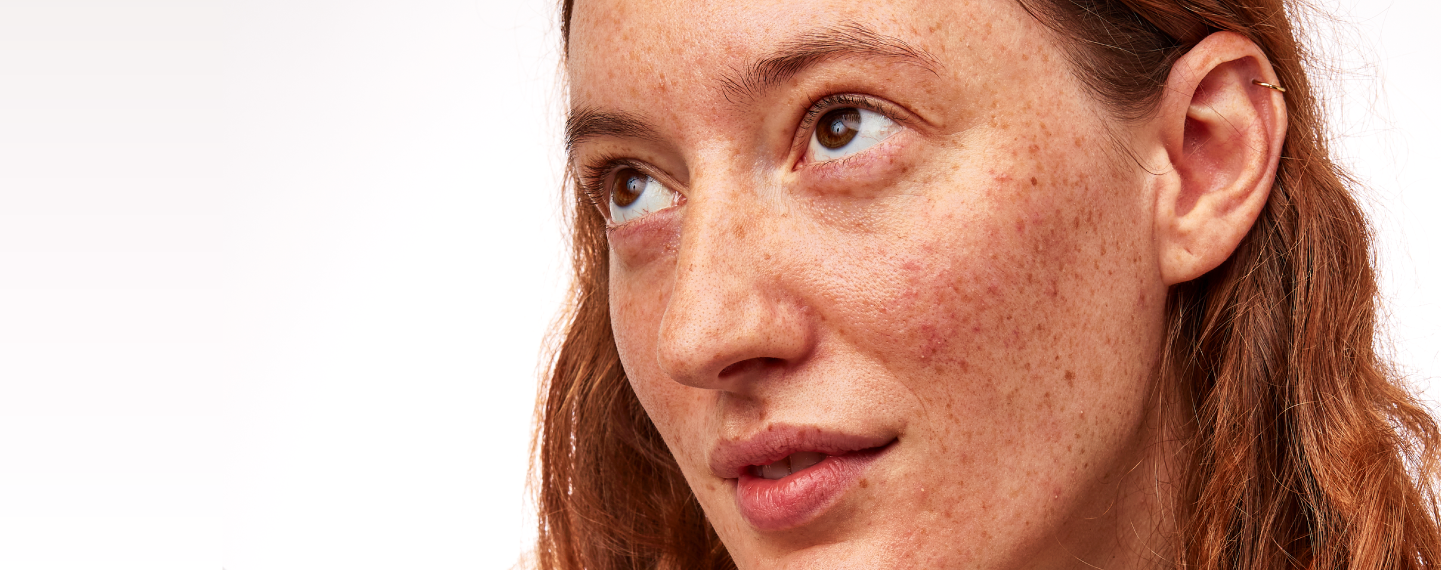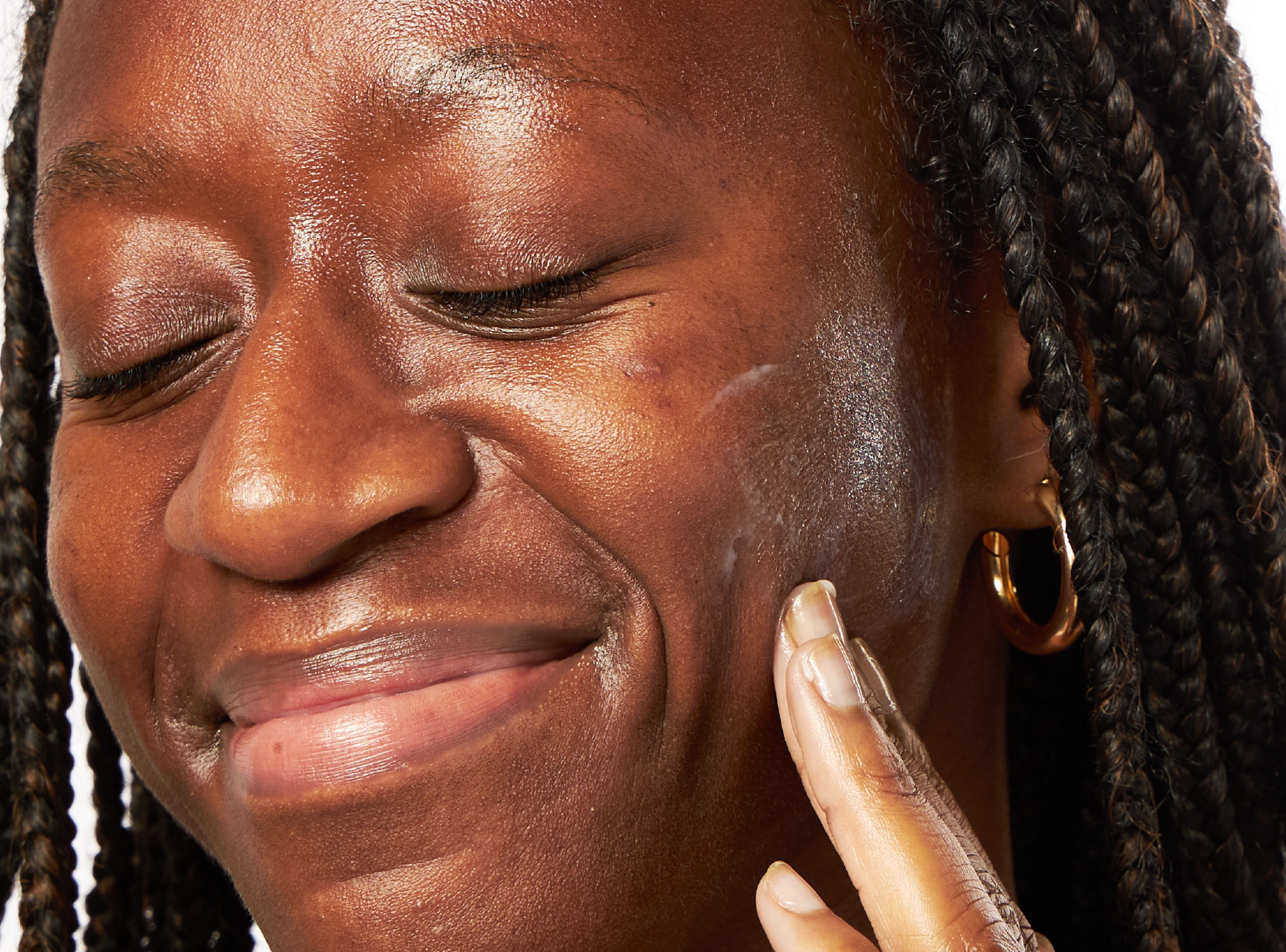Education
How to unclog your pores


SHARE
Education
How to unclog your pores
Medically reviewed by Vicky Davis, FNP
Written by Apostrophe Team
Last updated 4/1/2024
We hate to be Captain Obvious, but clogged pores are not fun.
Whether they manifest as little blackheads on your nose or as big red pimples, they for sure get in the way of your healthy complexion goals.
With this, it’s safe to say that unclogging pores is something everyone should know how to do. Also important: knowing how to prevent them from getting clogged in the first place.
Consider this your guide! Learn what can lead to clogged pores — then discover ways to get the dirt and grime out of them.
What Causes Clogged Pores
It’s pretty straightforward: pores get backed up when a combination of sebum and dead skin cells build up in your pores. This can lead to acne and blemishes.
Pores are small openings on the skin (most notably your face) that allow your body to release gas and fluids — like sweat and oil.
As for the stuff that clogs pores, sebum is one culprit. This oil-like substance is created by your sebaceous glands and it has a purpose — through this oil production, your skin, and hair are lubricated.
Sebum also serves as a barrier, protecting your skin from bacteria and other environmental factors.
Excess sebum can lead to clogged pores. Things like hormone fluctuations (like what happens during your period) can lead to an increase in sebum production.
As can overwashing your skin — when you strip away natural oils, your skin may overproduce oil to make up for it.
As for dead skin cells, your body naturally sheds them every 40 to 56 days in a process called epidermal turnover, which is the process to renew and replace skin.
As dead skin cells mix with excess sebum, it can lead to blocked pores — which can lead to zits.
Ways to Unclog Your Pores
If your pores do get clogged, you’ll want to unclog them (duh).
Not only will this make your skin look good, but it’ll also help prevent the possibility of acne. Here are four ways you can keep your pores clean.
Wash Your Face Twice a Day
You should be washing your face in the morning and at night as a part of a healthy skin care routine. It’s also a good idea to do it after the gym to wash away that sweat.
When it comes to trying to get clean pores, research shows that staying consistent with a gentle cleanser and moisturizer is key. This can reduce mild acne and promote all-around skin health.
The American Academy of Dermatology also suggests considering a cleanser with salicylic acid as a way of unclogging pores.
Salicylic acid is a naturally occurring ingredient that is often manufactured for skin care purposes.
Here’s why: it has anti-inflammatory properties and can exfoliate the skin, which may aid in unclogging pores.
Additionally, it has antibacterial properties, which may reduce certain types of acne-inducing bacteria.
How you wash can also help. You want to use warm water (not hot!) and should gently massage the cleanser onto your facial skin in a circular motion before washing it away. Scrubbing hard can irritate and inflame your skin.
Exfoliate Your Skin
Speaking of exfoliation, it’s an important step if you want to keep your pores unclogged.
When you exfoliate, you are removing dead skin cells from your face — which can help prevent your pores from getting blocked.
There are two types of exfoliants — mechanical and chemical.
The first involves using something with a slightly rough texture (like a sponge or a face scrub) to physically remove dead skin cells.
The second uses chemical exfoliants (like alpha hydroxy acid) to remove those dead skin cells.
But, here’s a word of warning: if you have sensitive skin, exfoliating it can be irritating. So, you should consult with a healthcare professional first.
No matter your skin type, you want to be gentle when using a physical exfoliator, so you don’t damage your skin. It’s also a good idea to apply a moisturizer after exfoliating since it can be very drying.
Finally, you don’t want to over-exfoliate.
Reach For Non-Comedogenic Products
From the makeup you choose to the moisturizer you use and everything in between, look for the word “non-comedogenic” on the label.
It’s essentially a fancy word that means these products won’t clog pores.
Other helpful words to look for on labels of skin care products are “oil-free” and “won’t clog pores.”
If you deal with acne, there’s some evidence to support that using non-comedogenic products can help.
Consider a Charcoal Face Mask
Charcoal is a very trendy skin care ingredient. You’ve probably seen influencers slathering their faces with these masks.
That’s because charcoal has been used in medical procedures to absorb toxins.
For example, if someone consumes something poisonous, medical professionals will pump their stomach with charcoal to absorb toxins.
So, the thinking is that by applying charcoal topically, it can pull out gunk from your pores to clear it.
You can even find a charcoal pore strip. These are intended to be applied to your nose. Then, when you peel them off, they appear to bring excess oil with them.
Be warned, however: there’s not much by way of research to report these claims. That said, there doesn’t seem to be much harm in trying products with charcoal. Just be sure to not overdo it.
Be Careful With Extractions
We get it. It can be super tempting to push out some of that gunk as a way of clearing clogged pores. But avoid that temptation at all costs.
Squeezing pores can lead to scarring, pain, and infections — all of which can make the appearance of pores worse. You may also accidentally push the dirt and grime deeper, rather than getting it out.
If you really feel like you need to manually get some of that stuff out, the safest thing to do is visit a healthcare professional for an extraction.
A dermatology professional will be able to safely remove whatever is blocking your pore without causing infection or scarring.
Dealing With Clogged Pores
Clogged pores aren't just an annoyance, they can lead to bigger blemishes (like painful red bumps and pustules).
Pores get clogged when excess sebum and dead skin cells mix and create a block.
Thankfully, there are a number of ways to get this gunk out.
Washing your face twice a day is a good start. Consider a facial cleanser with salicylic acid for added benefits. It’s also a good idea to use non-comedogenic products.
From there, you can consider gently exfoliating your skin to slough away what’s clogging pores or using other products specifically made to pull out what clogs pores (like a charcoal mask).
You also have the option of visiting a medical professional to do extractions on congested skin.
If you're looking for a solution for your clogged pores, get connected with an expert derm team through Apostrophe. They'll create a customized treatment plan for your unique skin and concerns.
10 Sources
Acne (2012). Retrieved from https://www.womenshealth.gov/a-z-topics/acne
Flament, F., Francois, G., Qiu, H., et al., (2015). Facial Skin Pores; A Multiethnic Study. Clinical, Cosmetic, and Investigational Dermatology. Retrieved from https://www.ncbi.nlm.nih.gov/pmc/articles/PMC4337418/
Koster, M.I. (2009, July). Making an epidermis. Annals of the New York Academy of Sciences. 1170, 7-10. Retrieved from https://www.ncbi.nlm.nih.gov/pmc/articles/PMC2861991/
Isoda, K., Seki, T., Inoue, S., et al. (2015, February). Efficacy of the combined use of a facial cleanser and moisturizers for the care of mild acne patients with sensitive skin. J Dermatol, 42(2):181-8. https://pubmed.ncbi.nlm.nih.gov/25483138/
What Can Treat Large Facial Pores? American Academy of Dermatology. Retrieved from https://www.aad.org/public/everyday-care/skin-care-secrets/face/treat-large-pores
Salicylic Acid. National Library of Medicine. Retrieved from https://pubchem.ncbi.nlm.nih.gov/compound/Salicylic-acid
How to Safely Exfoliate At Home. American Academy of Dermatology. Retrieved from https://www.aad.org/public/everyday-care/skin-care-secrets/routine/safely-exfoliate-at-home
Kraft,J., Freiman, A., (2011). Management of acne. Canadian Medical Association Journal. Retrieved from https://www.cmaj.ca/content/183/7/E430
Do Charcoal Face Masks Work? UPMC Health Beat. Retrieved from https://share.upmc.com/2018/03/benefits-charcoal-face-mask/
Pimple Popping: Why Only a Dermatologist Should Do It. American Academy of Dermatology. Retrieved from https://www.aad.org/public/diseases/acne/skin-care/popping
Like what you just read? Sign up for our email list to get the scoop on skincare science delivered straight to your inbox.

Deep Dives
A dermatologist shares his thoughts on the recent studies about benzoyl peroxide and benzene.
Read More
Education
What is milia?
What is milia? Today, we’re jumping into one type of bump that you may have heard about most commonly in infants — milia.
Read More
Education
Best moisturizer for acne-prone skin
If you have combination acne-prone skin, figuring out which moisturizer is best for your skin might be tough. In this guide, we break down the best moisturizer for combination, acne-prone skin.
Read More
